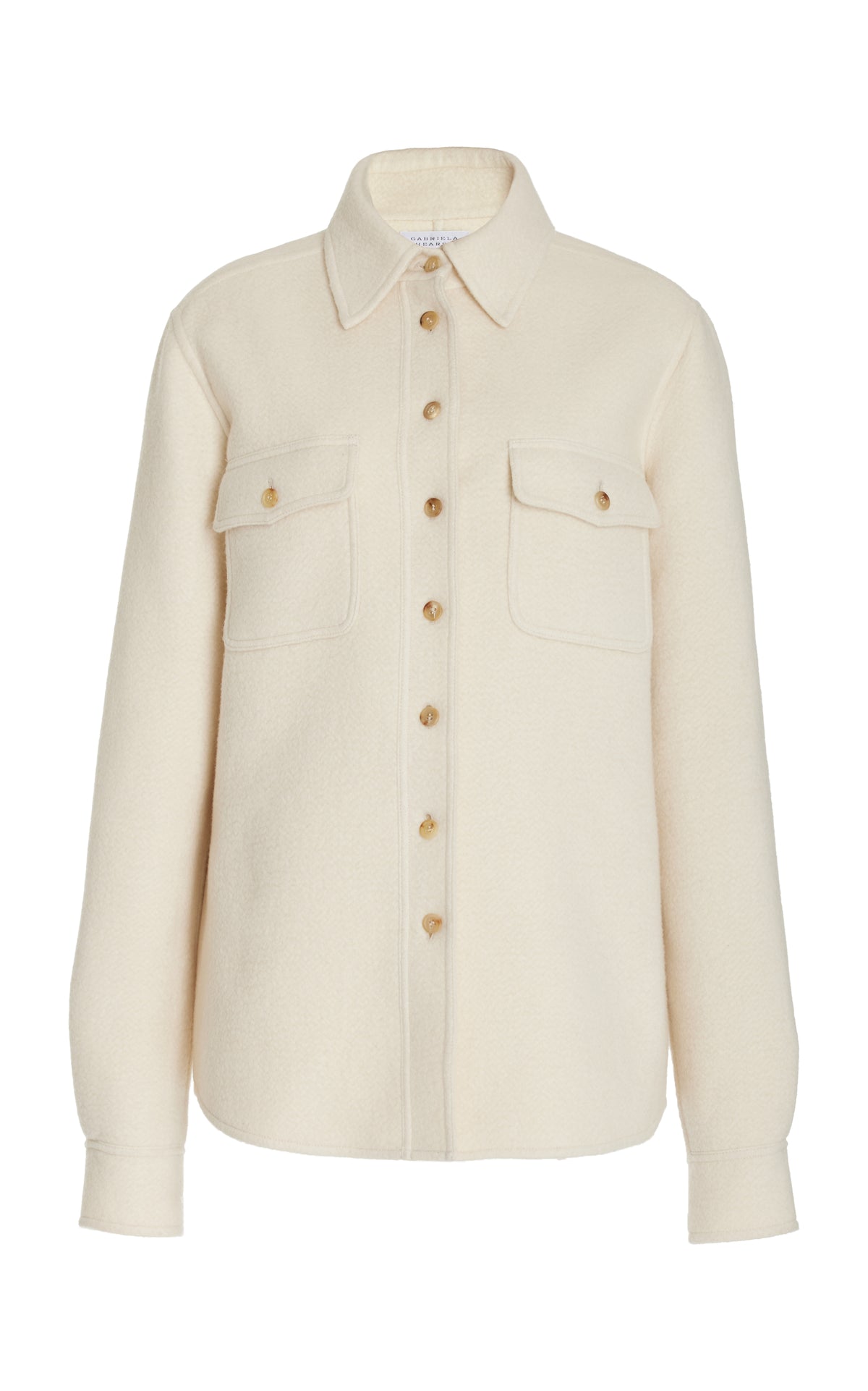

Material Supplier Transparency:
John Austin Top in Ivory Recycled Cashmere Felt
This perfect shirt jacket is inspired by a traditional workwear garment. The utilitarian aspect of The John Austin Top is juxtaposed against the eco cashmere boucle base. Patch details at the back of the sleeves and button-up pockets further accentuate the idea of strong functionality married with a soft and luxurious feel..
Details:
- 22% Cashmere/22% Recycled Cashmere/ 37% Alpaca/ 13% Virgin Wool/ 6% Silk (Upcycled Material; Europe). Dying/Weaving/Finishing Italy.
This family-owned mill installed solar panels in 2011, in effort to power its electricity needs. Additionally, they treats wastewater internally before recycling. They recently obtained certification by the Global Organic Textile Standard (GOTS), are working toward the Better Cotton Initiative (BCI), and are shifting to organic linen and hemp. They abide by the following compliances: Global Recycled Standard (GRS) Responsible Wool Standard (RWS) Zero Discharge of Hazardous Chemicals Manufactured Restricted Substances List (ZDHC MRSL) Global Organic Textile Standard (GOTS)
This garment was made in a small Factory located in the province of Brescia, Italy. They adhere to a code of conduct and follow standards by the Italian legislation.
Alpaca is a warm and lightweight fiber with origins in Peru. It has the largest array of natural colors of any animal fiber, and is often considered as soft as cashmere. Alpaca provides about three times as much warmth per weight as wool. While wool traps warmth in the pockets of air within the fiber, alpaca is warmer and lighter because it is completely hollow. Another difference from wool is that alpaca animals do not have lanolin, the emollient in sheep that can cause wool to feel itchy. This eliminates the textile processing step for lanolin extraction. Alpaca also has desirable similarities to wool, such as water-resistance and ability to wick perspiration. Another positive aspect of alpaca is that it has one of the lowest environmental impacts of animal fibers. Alpaca hooves are softly padded, so their grazing does not cause soil erosion and flooding like sheep.
Wool is a renewable fiber; one sheep can produce 4-5 pounds of wool per year. Wool provides warmth by trapping heat, while simultaneously transporting moisture away from the body so skin stays dry and comfortable. It is naturally antimicrobial, so it resists odors and rarely needs washing. Its exceptional durability allows for long garment lifespan, and it can biodegrade when disposed into right soil conditions.
Cashmere is one of the most luxurious wools, with desirable drape, softness and wrinkle resistance. It is up to three times more insulating than regular wool, with lofty fibers that can be tightly knit into warm and lightweight fabric. Like all wool, it wicks moisture and allows skin to breathe. Cashmere is considered hypoallergenic, since it doesn’t have lanolin. While more delicate than other wool, cashmere garments will not lose their shape if properly cared for. This is due to the fiber’s natural stretch that allows garment to move with you and recover.
Silk is known for its luxurious drape, luster and ability to take rich color. It is the strongest natural fiber and has low density, creating light and comfortable fabric. Silk’s resilient elasticity maintains garment shape, and its smooth surface is resistant to attracting dirt. Silk keeps you cool in warm weather, and provides insulating warmth in cool weather.
